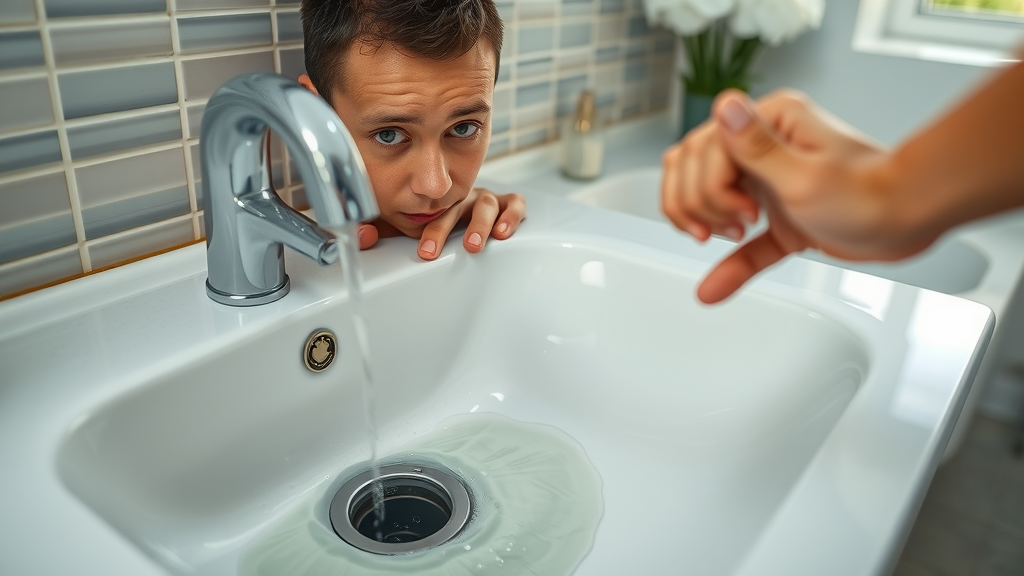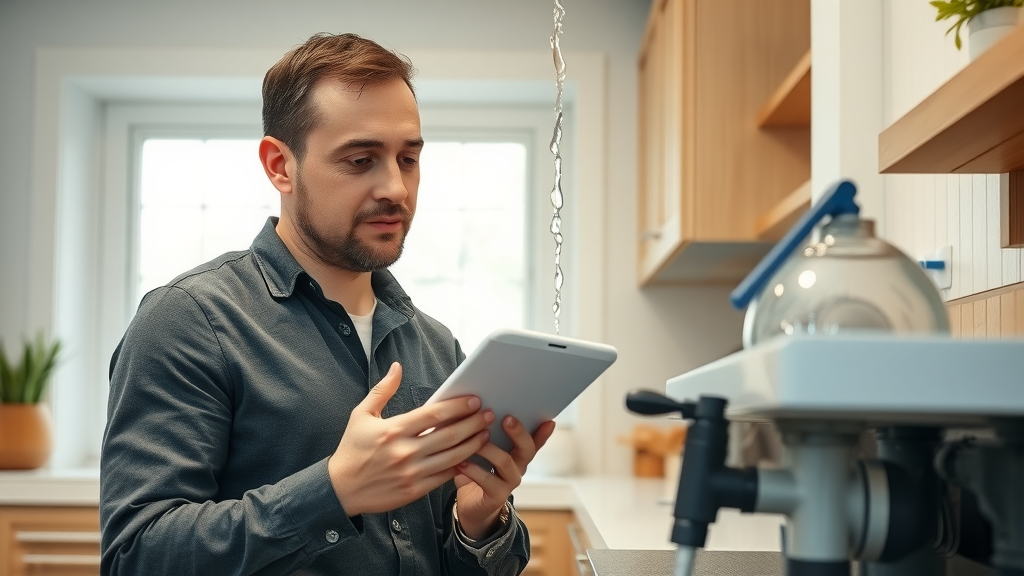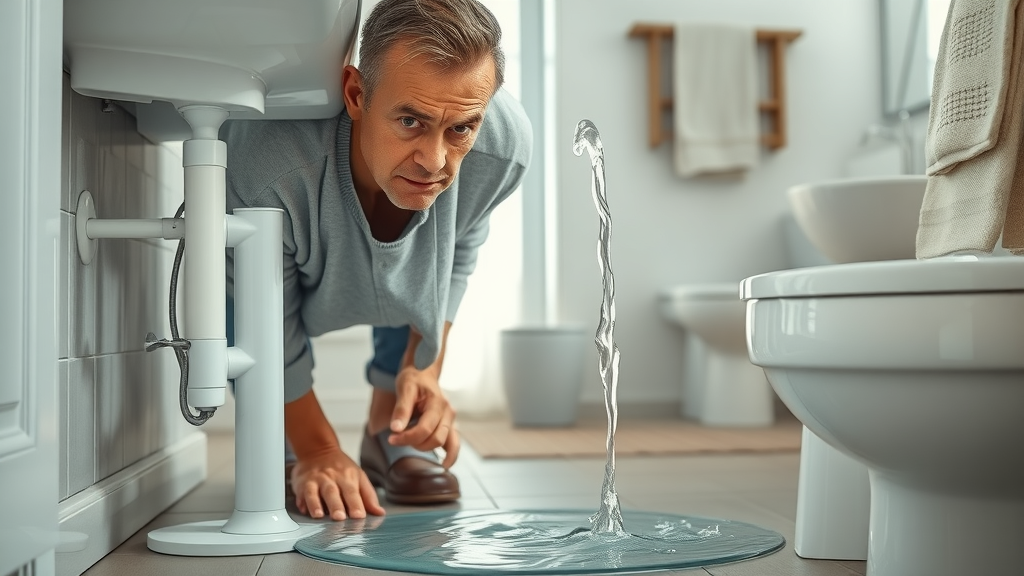"Did you know that more than 50% of household plumbing emergencies stem from poor drain cleaning habits?"
Unlocking Drain Cleaning: Your First Step to a Clog-Free Home
A smooth-running home starts with clean drains—yet, drain cleaning remains one of the most overlooked chores for many homeowners. The importance of keeping your drains in top shape can't be overstated. Not only does effective drain cleaning eliminate the headache of a clogged drain , but it also protects your plumbing system from long-term damage and expensive repairs. Practical, consistent drain maintenance gives you peace of mind while also preserving the value of your home.
Consider the routines in your kitchen sink and bathroom: when you notice water draining slowly or detect unpleasant odors, these are clear signals that your pipes need immediate attention. Ignoring these clues can result in a total blockage, water damage, or even costly interventions by a cleaning service. By adopting preventative measures and choosing the right drain cleaner, you’ll enjoy clean drains and uninterrupted plumbing performance.
The hidden costs of neglecting drain care add up—think of money spent on emergency drain cleaning services, lost time, and the stress of major repairs. A little proactive effort using both professional products and DIY methods can save you thousands. So, what are the best secrets to keeping your drains free from clogs and your plumbing system in top shape? Let's dive in.

- Why effective drain cleaning matters: Prevents blockages and protects your home.
- Common signs of clogged drain issues: Slow draining, gurgling noises, foul odors.
- The hidden costs of ignoring drain cleaning: Emergency service fees, water damage, major repairs.
What You'll Learn From This Guide on Drain Cleaning
- Top drain cleaners and when to use them
- Efficient drain cleaning methods that work fast
- Easy DIY and professional drain cleaning service tips
- The role of baking soda and vinegar in drain care
- Cost versus benefit: DIY cleaning vs. hiring cleaning services
- How to identify and prevent stubborn drain clogs

Essential Drain Cleaner Types and How to Choose the Right One
Chemical Drain Cleaner vs. Natural Alternatives for Drain Cleaning
Selecting the right drain cleaner is crucial when facing a stubborn drain clog. Chemical drain cleaners work quickly and can dissolve organic matter, hair, and grease in just minutes. However, the active chemicals in these products can sometimes cause corrosion in older piping systems or be unsafe for regular use. In contrast, natural alternatives such as baking soda and vinegar are eco-friendly and safe for all types of pipes, though they often take longer to clear severe clogs.
The major advantage of chemical drain cleaners is their speed and power—they’re often the first choice for serious, urgent blockages. But repeated use can harm both your plumbing system and the environment, especially if used improperly. Conversely, natural solutions offer a gentler, routine way to maintain clear drains and can be particularly effective against minor or slow-building blockages. Both methods break down organic material, but for tough clogs or tree roots deep in your sewer line, you may need to escalate your strategy.
- Pros and cons of chemical drain cleaners: Fast action, but may damage old pipes and not eco-friendly.
- Benefits of using baking soda and other natural cleaners: Safe, sustainable, perfect for maintenance.
- How drain cleaners work: They break down common drain blockages caused by hair, soap, grease, and other organic matter .
When to Call a Drain Cleaning Service for Stubborn Drain Clogs
Knowing when to handle a drain issue yourself versus when to call a drain cleaning service is key. If you notice recurring clogs, standing water that won’t drain, or foul odors coming from your pipes, these are signs that DIY solutions aren’t enough. Professional cleaning services use advanced techniques like hydro-jetting or mechanical drain augers to tackle even the most stubborn blockages. They bring experience, specialized equipment, and detailed diagnostics to resolve complex problems affecting your entire sewer and drain system.
For more complex plumbing challenges—especially those that impact multiple drains or require urgent attention—exploring the benefits of a dedicated emergency plumber service can be invaluable. These professionals are equipped to respond quickly and efficiently, minimizing disruption and preventing further damage to your home.
When you call in a cleaning service, expect a streamlined process: initial inspection, identification of the blockage source, and an effective cleaning plan. Typical costs for professional drain cleaning services range from $100 to $500, depending on severity and accessibility, but investing in a timely cleaning service often prevents much more expensive repairs, like a full sewer line replacement.
- Signs your clogged drain needs professional attention: Persistent standing water, foul smells, gurgling noises.
- What to expect from a drain cleaning service: Inspection, thorough cleaning, and expert advice on prevention.
- Average cost for cleaning service: Most routine drain cleaning services cost $100-$500 depending on severity.
The Best Drain Cleaning Methods: Fast Solutions for Every Blockage
Mechanical Tools: Drain Auger and Their Role in Drain Cleaning
When you encounter a persistent drain clog that won’t yield to hot water, vinegar, or commercial cleaners, it’s time to bring out mechanical tools. The drain auger , or plumbing snake, is a tried-and-tested device that physically removes or breaks apart major blockages in your plumbing system. By maneuvering a flexible cable deep into your drain, you can dislodge stubborn materials such as hair, soap scum, and even tree roots infiltrating your sewer line.
Other essential mechanical tools used in drain cleaning include plungers and specialized drain snakes. These can quickly clear minor blockages without the need for chemicals. Plumbers rely on robust drain augers as a first-line intervention for kitchen sinks, bathroom drains, and even commercial systems—ensuring clean drains while minimizing the risk of damage to your piping system.
- Drain auger: A hands-on approach to fast drain cleaning and stubborn drain clogs .
- Plunger, drain snakes, and more: Key equipment used by every effective drain service.

Homemade Solutions – Baking Soda and Vinegar for Drain Cleaning
For those preferring gentle, chemical-free options, baking soda and vinegar remain classic choices in the fight against a clogged drain . Start by pouring half a cup of baking soda down the drain, swiftly followed by a cup of white vinegar. The reaction between these two substances foams up, helping to break apart the grime and minor clogs lining your pipes. Cover the drain for about 15–30 minutes to allow the mixture to act on debris, then flush thoroughly with hot water to clear the loosened material.
This method is ideal for regular maintenance of kitchen sink and bathroom drains, and it can be repeated weekly to prevent future drain clogs. It’s especially useful for organic buildup like soap residue and food particles, keeping your clean drains in good shape with minimal environmental impact.
- Step-by-step: Pour baking soda down the drain, add vinegar, cover, then flush with hot water.
- How long to let it sit: 15 to 30 minutes for maximum effectiveness against organic matter and tough buildup.
| Drain Cleaning Method | Effectiveness | Safety | Average Cost |
|---|---|---|---|
| Chemical Drain Cleaner | High (fast clogs) | Use with caution (pipe corrosion risk) | $10 - $20 per use |
| Baking Soda & Vinegar | Moderate (regular upkeep, light clogs) | Very safe, eco-friendly | $1 - $2 per use |
| Enzyme-Based Cleaner | Good (organic clogs, slow acting) | Safe, all pipes | $8 - $25 per use |
| Professional Drain Cleaning Service | Very high (stubborn, deep clogs) | Very safe (expert handled) | $100 - $500 per visit |
Preventing Drain Clogs: Daily Tips to Keep Drains Clean
Prevention is the ultimate strategy for maintaining a clog-free home. Begin by adopting daily practices such as disposing food waste and grease in the trash rather than your kitchen sink. Install mesh screens over drains to catch hair and particles, and make it a habit to run hot water down your pipes after heavy use, especially after washing dishes or rinsing oils.
Another crucial tip is to avoid flushing items such as coffee grounds, cooking oils, and wet wipes down the drain, as these contribute to stubborn drain blockages and pipe buildup. If you have a garbage disposal, use it judiciously and schedule preventative maintenance with a trusted cleaning service every 6-12 months.
- Routine practices: Allot time weekly to flush drains with hot water and clean stoppers or screens.
- Keep out of your pipes: Grease, fibrous vegetables, rice, coffee grounds, paper products, and non-degradable waste.
- Schedule cleaning services: Preventative drain cleaning services can save money and prevent emergencies.

How to Spot Early Signs of a Clogged Drain and Act Fast
Spotting drain warning signals early can save you from the hassle of a complete drain blockage. Common symptoms include water that drains slowly, gurgling noises from your pipes, or sudden bad smells coming from the sink or tub. If you observe these, act quickly—try hot water and a plunger before the situation escalates.
Conducting simple, routine DIY assessments can be a game-changer. Pour a glass of hot water down the drain, and watch how quickly it disappears. If water lingers or you see bubbles and hear unusual sounds, it’s time to use a drain cleaner or consider calling a cleaning service before a small issue becomes a major headache. Early intervention not only keeps your drains clear but also safeguards your entire plumbing system from extensive and expensive damage.
- Warning signals: Slow drainage, bubbling, and foul odors from your drains.
- DIY assessments: Hot water test, frequent cleaning, and basic plunging can prevent emergency service calls.
The True Cost of Neglecting Drain Cleaning
Delaying routine drain cleaning can be a costly mistake. What begins as a minor blockage may quickly escalate into a full plumbing emergency, leading to pipe replacements or even sewer line repairs. The costs don’t stop at service fees—water damage, mold remediation, and inconvenience all add up. A blocked sewer line can disrupt household routines and potentially affect the health and safety of your family.
The longer you wait to address a drain clog , the higher your final bill will be. Regular maintenance with professional cleaning services or safe DIY methods keeps your system running reliably and prevents dramatic, expensive repairs and property damage.
- From minor drain clogs to major sewer line issues: Early action saves money and stress.
- How delayed drain cleaning can escalate costs: Repairs, replacement, and restoration fees rise quickly.
| Service | Average Cost |
|---|---|
| Drain Cleaning Service | $100 – $500 |
| Clogged Drain Repair | $150 – $700 |
| Sewer Line Replacement | $2,500 – $8,000 |
Drains, Cleaning Services, and Drain Cleaning Products Reviewed
Top-Rated Drain Cleaners and Cleaning Services: Which to Choose for Drain Cleaning
With countless drain cleaning products lining store shelves, it can be tough to know which ones actually work. Expert reviews show that while chemical drain cleaners provide rapid relief for tough clogs, many homeowners are shifting toward enzyme-based and eco-friendly solutions for routine drain maintenance. Look for products that clearly list their safe-use instructions and are suitable for your specific plumbing system.
When considering cleaning services or cleaning companies, focus on experience, customer reviews, and labor guarantees. Professional cleaning services that offer up-front pricing and same-day service for severe blockages have proven to be most reliable. Practical advice? Always keep a versatile drain cleaner at home for emergencies but rely on trusted professionals for recurring or deep-seated clogs to avoid ongoing headaches.
- Expert review of top brands: Liquid-Plumr, Drano, Green Gobbler, and enzyme-based cleaners all score highly for specific uses.
- Best drain cleaning services: Choose drain cleaning companies with proven expertise and positive feedback.
- Practical advice: Use the right tool and cleaner for each job, and don’t hesitate to call professional cleaning companies if your DIY efforts fall short.

People Also Ask: Common Questions About Drain Cleaning
What is the best way to clean your drains?
The best way to clean your drains is with regular maintenance using safe, proven products and methods. Combine mechanical tools, such as a plunger or drain snake, with natural or enzyme-based cleaners for ongoing care. Reserve chemical drain cleaners for tough, occasional clogs, and always follow package instructions to ensure both safety and effectiveness.
- Best practices: Regular cleaning, proper use of cleaners, safe disposal of waste, and timely professional services
What is the average cost of drain cleaning?
The average cost of drain cleaning depends on the method you choose. DIY options using baking soda and vinegar cost less than $2 per use, while store-bought chemical drain cleaners range from $10 to $20. Hiring a professional cleaning service for stubborn clogs can range from $100 to $500, depending on the extent and severity of the blockage.
- DIY: $1–$20 depending on materials
- Professional drain cleaning service: $100–$500
What is the best method of drain cleaning?
The best method for drain cleaning varies by situation. For preventative care and mild clogs, natural methods using baking soda and vinegar or enzyme cleaners are ideal. For immediate, serious blockages, chemical drain cleaners or a professional drain cleaning service is recommended. When in doubt, start simple and escalate as needed according to your clog’s severity.
- Enzyme-based cleaners: Safe, good for maintenance
- Chemical drain cleaners: Fast, best for tough clogs (use with caution)
- Professional services: Required for deep, recurring, or severe clogs
How long to let vinegar and baking soda sit in the drain?
Let the mixture of vinegar and baking soda sit in your drain for at least 15–30 minutes. This gives the chemical reaction time to break up grime and organic matter before you flush the pipes with hot water. For deeper blockages, allow up to an hour for maximum effect.
- Let sit for 15–30 minutes, then flush with hot water for clean drains.
Expert Advice: Drain Cleaning Do’s and Don’ts
- DO: Use strainers, dispose of grease and food waste properly, and schedule regular drain maintenance.
- DON’T: Put bones, eggshells, coffee grounds, or non-degradable wipes down the drain.
- DO: Follow all safety instructions when using chemical drain cleaners —ventilate the area and wear gloves.

"Efficient drain cleaning is the cornerstone of a healthy home — don’t wait until it’s too late to act."
Frequently Asked Questions About Drain Cleaning
-
How often should you do routine drain cleaning?
It’s best to clean your drains every 1–2 weeks for high-use areas, and schedule professional service every 6–12 months depending on your home’s age and usage. -
Are chemical drain cleaners safe for all pipes?
Not always. Some older metal pipes and septic systems can be damaged by harsh chemicals, so check product labeling and consult a professional if unsure. -
What services do drain cleaning services offer?
Professional services include mechanical snaking, hydro-jetting, camera inspections, and sewer line cleaning for stubborn or recurring drain clogs. -
What is the lifespan of a sewer line with regular cleaning?
With regular maintenance and timely cleaning, sewer lines can last 50–100 years, but neglect can significantly shorten that lifespan due to corrosion and blockages.
Take Control of Clogged Drains With Effective Drain Cleaning Solutions
- Choose the right drain cleaner or drain cleaning service today
- Safeguard your home and budget with proactive drain cleaning
- Ready for rapid blockages prevention? Take the next step towards cleaner, safer pipes now.
If you're looking to expand your knowledge beyond home drain care, consider exploring the broader world of plumbing and heating solutions. Discover how a comprehensive approach to your home's systems can enhance comfort, efficiency, and long-term reliability by visiting our guide on trusted plumbing and heating services . Whether you're interested in preventative maintenance or planning future upgrades, these insights will help you make informed decisions for a worry-free home.
Sources
- Family Handyman – https://www.familyhandyman.com/article/how-to-unclog-any-drain/
- This Old House – https://www.thisoldhouse.com/plumbing/21192759/how-to-unclog-a-drain
- Angi – https://www.angi.com/articles/average-cost-drain-cleaning.htm
- Home Depot – https://www.homedepot.com/c/ab/drain-cleaner-buying-guide/9ba683603be9fa5395fab9015d9ea6e
- Bob Vila – https://www.bobvila.com/articles/best-drain-cleaner/
Maintaining clear and functional drains is essential for a healthy home environment. To enhance your understanding and approach to drain maintenance, consider exploring the following resources:
-
“Drain Cleaning without Harsh Chemicals” : This article from Roto-Rooter provides insights into eco-friendly methods for unclogging drains, emphasizing the use of household items like baking soda and vinegar to maintain clear pipes without resorting to harsh chemicals. ( rotorooter.com )
-
“Drain Cleaning Methods by Pros – General Plumbing Experts” : This resource outlines professional techniques for drain cleaning, including the use of manual drain snakes, motorized drain augers, and hydro jetting, offering a comprehensive understanding of methods employed by experts to tackle stubborn clogs. ( generalplumbing.com )
By delving into these resources, you can gain valuable insights into both DIY and professional strategies for effective drain maintenance, ensuring your plumbing system remains in optimal condition.
 Add Row
Add Row  Add
Add 









Write A Comment